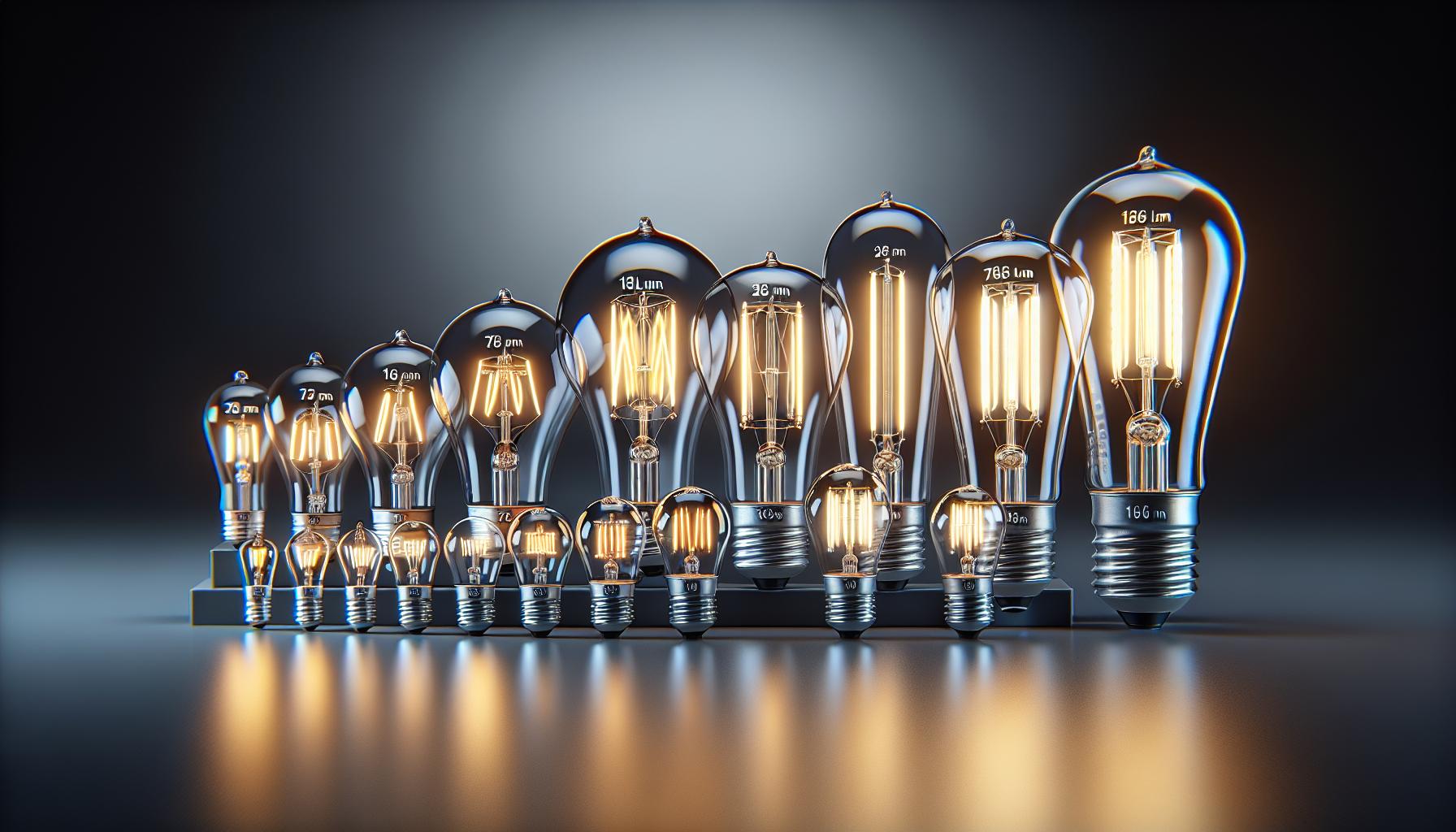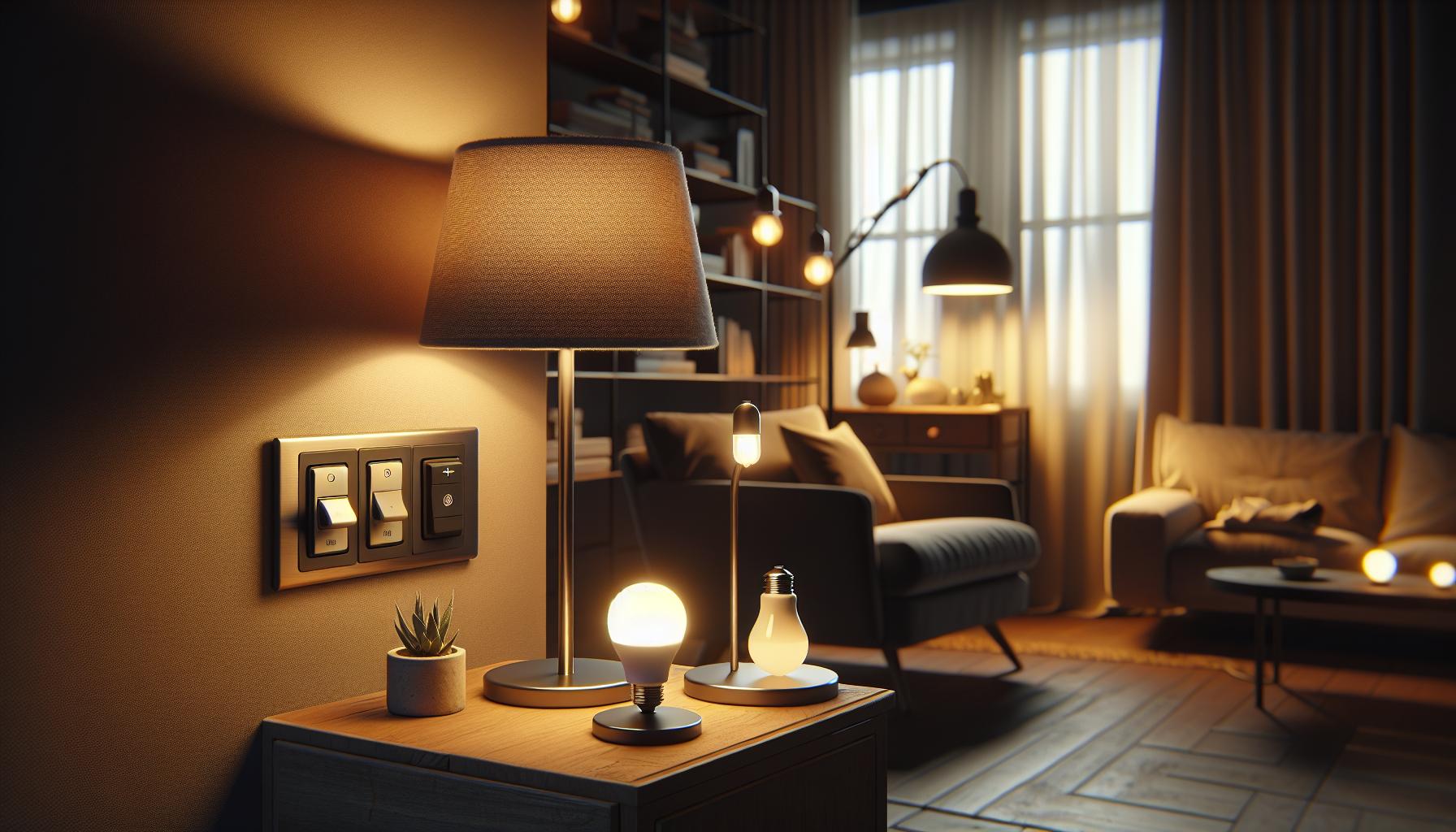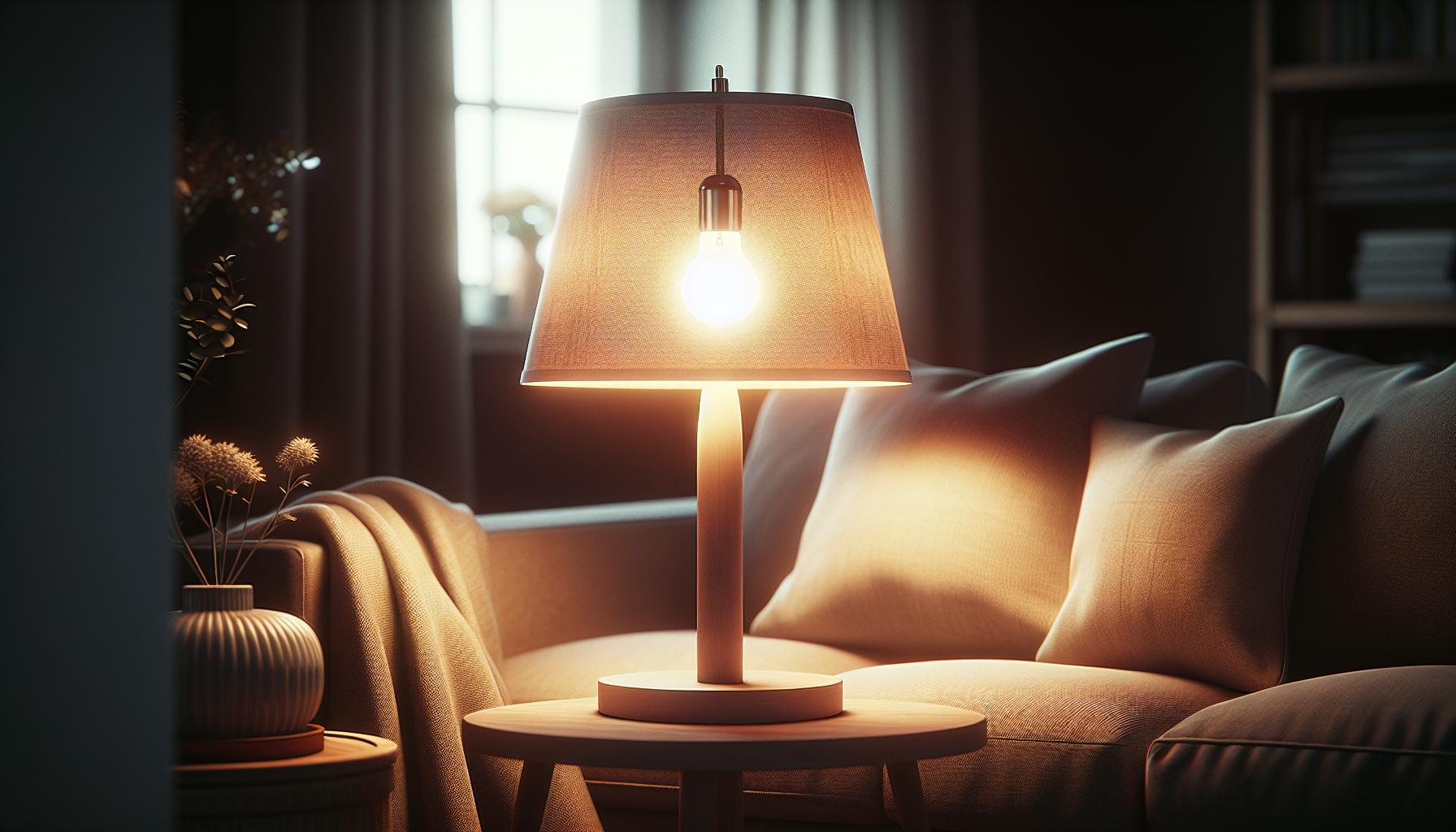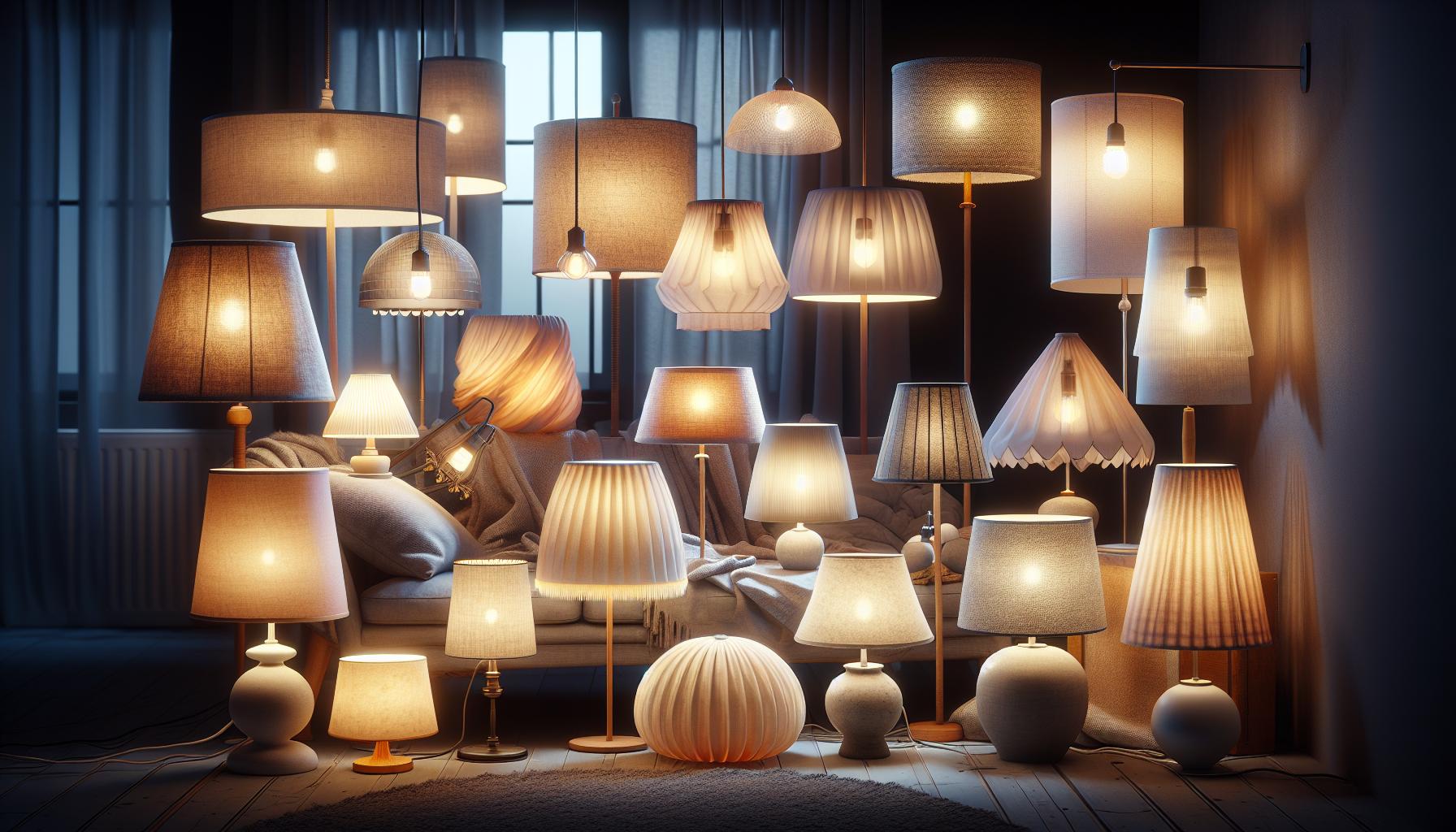Ever found yourself squinting under the harsh glare of a too-bright light bulb? You’re not alone. Sometimes, that 100-watt glow is just overkill for your cozy reading nook or romantic dinner setup.
Don’t worry, there’s no need to shop for dimmers or lower wattage bulbs just yet. You’ve got some clever tricks up your sleeve to soften that brilliant beam without breaking the bank.
Why Dull a Light Bulb?
When you’re knee-deep in home DIY projects, lighting can make or break the ambiance of a room. Bright lights have their place and time, but sometimes a softer glow is what you need to create the perfect environment. Here’s why you might want to dial back the luminance and how it can enhance your space.
First off, excessive brightness can be harsh on the eyes. You’ve probably experienced the discomfort of walking into a brightly lit room after being in a dimmer space. This isn’t just an inconvenience; it can lead to eye strain and headaches, especially if you’re exposed for prolonged periods.
Moreover, the mood of a room hangs heavily on its lighting. A brighter bulb might be perfect for detail-oriented tasks like reading or cooking, but it could be overkill for a quiet dinner or a relaxing bath. Subdued lighting invokes a sense of calm and relaxation, and by dulling your light bulbs, you can easily transition the vibe of your space to match your activities or the time of day.
And here’s a fun fact for the energy-conscious DIY enthusiast: Duller lights can save on energy costs. Bulbs that aren’t always at maximum brightness tend to consume less electricity, which means a potentially lower energy bill and a happier planet.
Lastly, your home decor benefits greatly from the right lighting. Brightness levels can dramatically affect how colors and textures appear. Soft lighting can accentuate colors, giving them a rich, deep hue, making your space not only more inviting but also more in line with your design aesthetics.
Think about the last time you enjoyed a meal at a restaurant with just the right lighting, or recall the cozy feeling of your favorite coffee shop. That experience is what you’re aiming for, and it’s absolutely attainable in your own home with just a little tweak to your lighting. So before you commit to a full lighting overhaul, consider the many benefits of simply dulling the lights you already have.
Understanding Light Bulb Wattage
Ever wondered why some light bulbs seem to outshine others or why certain rooms feel cozier with just a lamp turned on? The secret’s in the wattage. It’s crucial to understand how wattage affects the brightness of your light bulbs.
Think of wattage as the horsepower behind your bulb’s glow. It’s the amount of energy a bulb uses to produce light. Higher wattage usually means brighter light, but it also means more energy consumption. This understanding is key when you’re aiming to dull a light’s brightness without compromising the room’s aesthetics or your electric bill.
When you’ve got a bulb that’s too bright, it’s tempting to just swap it with one of a lower wattage. This method works, but let’s get a bit more technical. Here’s a tip: look for lumens, not just watts. Lumens measure the actual amount of light output. So, if you want a softer light, aim for bulbs with fewer lumens.
Here’s a quick chart to help you compare wattages with lumens for incandescent bulbs:
| Incandescent Bulb Wattage | Approximate Lumens |
|---|---|
| 40W | 450 lm |
| 60W | 800 lm |
| 75W | 1100 lm |
| 100W | 1600 lm |
| 150W | 2600 lm |
Armed with this info, matching your desired ambiance with energy efficiency should be a breeze. And let’s not overlook LED options. Modern LED bulbs give you a similar lumen output with way less wattage—that’s a real power-saving hack.
« What Color Light Bulbs Keep Bugs Away? Discover the Best Anti-Insect Lighting
What Light Bulb Doesn’t Attract Bugs? Discover Bug-Repellent Lighting Secrets »
To further fine-tune the lighting mood, consider installing dimmers. They’re a smart choice for accomplishing that ideal glow, allowing you to adjust the lighting to your needs throughout the day. But make sure your bulbs are dimmable; not all LEDs play nice with dimmer switches.
By mastering the art of wattage and lumens, you’ll turn any overly bright nook into a subdued sanctuary — perfect for winding down after a long day’s work or hosting that dinner where the atmosphere is just as important as the dish on the plate.
Tricks to Dull a Light Bulb
Whether you’re aiming for mood lighting or seeking to reduce glare, there are a handful of tricks up your sleeve to soften the intensity of your bulbs. Remember, it’s not just about reducing brightness; it’s about enhancing comfort and setting the right ambiance in your space.
Light shades have been a staple in interior design precisely for their ability to modify the intensity and direction of light. Opting for darker or opaque shades can significantly reduce the perceived brightness of your bulb, creating a cozier atmosphere. Plus, they add a touch of style to your room!
Another option is using dimmer switches, which work perfectly for rooms that serve multiple purposes at different times of the day. The ability to adjust light levels on the fly means you can gear up for an energizing morning or wind down with a mellow glow in the evening. Plus, they’re energy efficient!
If you’re feeling crafty, DIY solutions like applying a non-permanent translucent film or light bulb paint can be fun projects. These allow you to customize the level of dullness and can add some color to your light. Just be sure that any material you use is safe and heat-resistant to avoid any fire hazards.
Frosted bulbs are an excellent ready-made solution that delivers a softer light without altering the bulb’s innate character. By softly diffusing the light, frosted bulbs eliminate harsh glares and spread light evenly across the room.
And don’t forget the role of furniture placement in light distribution. Sometimes, simply rearranging your furniture can help to block or filter light in a way that naturally dulls brighter bulbs. By playing around with the layout, you might find a setup that better contains light to your liking without any extra work.
For those who revel in high-tech solutions, smart bulbs offer a contemporary solution to controlling brightness. These innovative bulbs can be adjusted through a smartphone app or home assistant devices—and they can do much more than dim. You can schedule lighting changes or even command them to respond to other smart home triggers for ultimate customization.
Remember, dulling your light bulb doesn’t mean you’re stuck with a dim room. It’s about finding the perfect balance that suits your needs and enhances the overall feel of your environment.
1. Diffuse the Light
When you’re aiming to soften the harshness of a bulb, diffusing the light is a fantastic strategy. Imagine you want that cozy, cafe-style lighting right in your living room; diffusing does exactly that. It spreads the light evenly, reducing glare and creating a calm, serene space.
Start with lampshades. They are your go-to solution to distribute the light uniformly. Opt for shades made from materials like linen or parchment for a warm, gentle glow. The thicker the material, the more it’ll tame those lumens. It’s all about picking the right fabric density and color; creamy whites and beiges usually do the trick.
Next up, diffuser panels. These are spectacular for overhead lights. You’ve likely seen them in offices but don’t worry, you can find versions that are much more home-friendly. They soften the light without dimming it down too much. Plus, they clip right onto your existing fixture, making installation a breeze.
Think about DIY methods too. If you love a hands-on project, why not craft your own diffuser? Semi-transparent fabrics or even a paper lantern can provide that muted light you’re after. Just make sure anything you make or install is safe for use around hot bulbs to avoid fire hazards.
For recessed lighting, trims with diffusers built-in are ideal. They fit right onto the light, serving a dual purpose: they cut down on the brightness and they make your ceiling look polished and complete.
And don’t forget, playing around with different light bulb types can also impact diffusion. For instance, frosted or soft-white bulbs already have a diffusion element to them. They’re designed to disperse the light output and eliminate hotspots, creating a gentle ambient effect without the need for additional accessories.
As you experiment with these various diffusing methods, you’ll find that the atmosphere of your room changes subtly. The right diffusion technique will transform harsh lighting into a soft wash that flatters every corner of your space. Keep tweaking until you hit that sweet spot where light no longer feels like a spotlight but like a natural part of your home’s warmth.
2. Use Lamp Shades
When looking for an effective way to dull the brightness of a light bulb, lamp shades should be your go-to solution. They’re not just decorative items; they play a crucial role in influencing the intensity and spread of light in your space. With a variety of materials and designs available, you can customize the amount of brightness and achieve the ambiance you’re aiming for.
Lamp shades come in countless shapes, sizes, and materials, each with its own light-diffusing properties. For instance, a thick, opaque shade will cast a dimmer, softer glow, perfect for a cozy bedroom setting. On the other hand, shades made of lighter fabric or paper can give off a brighter, yet still diffused light, suitable for reading nooks or home offices.
Let’s break down some of the best materials for lamp shades that are designed to soften light effectively:
- Linen
- Silk
- Parchment
- Frosted glass
Each material has a unique way of diffusing light. Linen and silk provide a soft glow that adds warmth to a room, while parchment can give a room a more natural, earthy tone. Frosted glass shades, though more commonly found in fixtures, scatter light widely and equally, removing any harsh glare.
Size and shape also determine how much light is diffused. A larger shade will generally diffuse more light than a smaller one, and shapes like bell, drum, or empire can either concentrate or spread out light. Choosing the right combination can dramatically change the way light fills your room.
To enhance the diffusion further, consider inner linings – often in white or metallic finishes – to reflect light downwards or upwards, minimizing the direct light that hits your eyes. Think of how a soft-box works in photography; it spreads the light source over a wider area, reducing the sharpness of shadows and creating a flattering light. Your lamp shade can perform exactly the same function, softening the light bulb’s glow to meet your desired ambiance.
3. Change the Bulb Color Temperature
Understanding color temperature is vital when you’re trying to alter the feel of your space. Think of color temperature like you would the warmth or coolness of a paint color; it’s a way to describe the appearance of the light emitted by a bulb. Measured in Kelvins (K), color temperature ranges from warm to cool tones. Warm light typically clocks in at 2700K to 3000K, giving off a cozy, yellowish hue, while bulbs rated at 5000K or higher emit a stark, blueish-white light akin to daylight.
It’s simpler than you might assume to change a room’s vibe by just switching the bulb. Here are some steps to adjust bulb color temperature effectively:
- Assess Your Current Bulbs: Check the Kelvin rating on your existing bulbs. This number is usually found on the bulb itself or its packaging.
- Define Your Ambiance: Determine the type of atmosphere you want. Warm lights are excellent for bedrooms or living areas where you want to unwind, while cooler lights are ideal for workspaces or kitchens where clarity is key.
- Purchase the Right Bulbs: Find bulbs within your desired Kelvin range. Nowadays, many bulbs are labeled as ‘soft white’, ‘bright white’, or ‘daylight’, which correspond to warm, cool, and cooler color temperatures, respectively.
Replacing standard light bulbs with ones that have a lower color temperature can dramatically change the mood. If you’re fond of evening get-togethers, softer, warmer bulbs will create an inviting and intimate environment. On the flip side, if you’re a DIY project enthusiast, brighter bulbs with a cooler temperature will aid in precision and detail work. Remember to choose LEDs or CFLs for energy efficiency and longer life spans as well.
Keep in mind the coordination of bulb color temperature with the natural light entering the room for a harmonious effect. Spaces with large windows that allow ample sunlight may benefit from cooler bulbs to balance the warm natural light, while rooms with limited sunlight might need the boost of warm-toned bulbs.
Conclusion
You’ve got all the tools you need to take control of the lighting in your space. Whether it’s through the strategic use of lamp shades or by adjusting the color temperature of your bulbs, you’re well on your way to creating the perfect ambiance. Remember, it’s not just about reducing brightness; it’s about enhancing the mood and feel of your room. So go ahead, play around with the options and watch as your space transforms with just a few simple changes. You’ll be amazed at the difference a little light manipulation can make. Happy dimming!
Frequently Asked Questions
What are some methods to soften the intensity of light bulbs?
To soften the intensity of light bulbs, use lamp shades made of materials like linen, silk, parchment, or frosted glass. You can also adjust the lamp shade size and shape, add inner linings, or change the bulb’s color temperature.
What role do lamp shades play in light diffusion?
Lamp shades help to diffuse light by dulling the brightness of a light bulb. They come in various shapes, sizes, and materials, each affecting the amount of light diffused. A right shade can create a flattering light by minimizing direct light.
What materials should I look for in a lamp shade to soften light?
Look for lamp shades made from materials such as linen, silk, parchment, or frosted glass. These materials are known for their light-softening properties that contribute to a more subdued and pleasant lighting effect.
How does changing the bulb color temperature affect a room’s ambiance?
Changing the bulb color temperature can alter the mood of a room. Bulbs with a lower color temperature emit a warmer light, which can create a cozy and inviting ambiance. Conversely, cooler temperatures provide a brighter, more alert feel.
What should I consider when selecting a bulb’s color temperature?
When choosing a bulb’s color temperature, assess your current bulbs, define the desired ambiance for your space, and select bulbs within the appropriate Kelvin range. Coordinate the bulb color temperature with natural light for the best effect.





